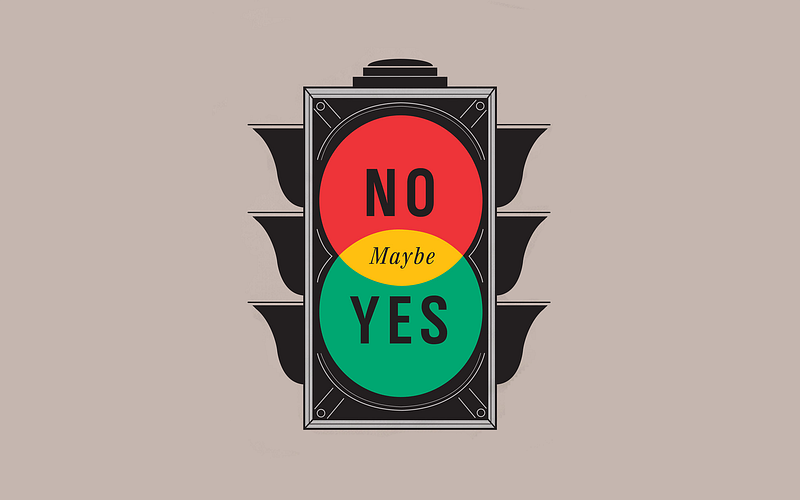
“Kids are never the problem. They are born scientists. The problem is always the adults. They beat the curiosity out of kids.” — Neil deGrasse Tyson
I enjoy supporting my 6-year-old son as he learns to play football. I position myself in his line of vision so he knows I am there and every so often give him a thumbs up when he glances my way. My idea of support is to be present and to offer positive reinforcement, when I see him do something good, I remember it and make sure he remembers it too by reminding him on our way home and that night before bedtime. It always breaks my heart when a parent pressures their child when they are in this fragile state of development. These kids are 6 years old and they are not only learning a new sport, but they are learning team dynamics.
Last weekend, one kid faced an empty goal; his whole team held their breath as he took his best shot. He missed badly, swinging at the ball wildly. I looked at an animated parent on the sideline, obviously the child’s father. The child glanced to his dad for a reaction and his dad shook his head in disappointment. I watched the kid as he chased the ball trying to make amends to his father for his “mistake”. I could feel his little heart hurting as he did so, full of self doubt and shame. Sounds awful! We would never do that! What a terrible parent! Before we judge we should reflect for a moment, we do this all the time, to our children, to our colleagues, to each other. That is the focus of today’s Thursday Thought.
React

Children ask their parents an average of 73 questions a day. Shamefully, by the time they reach middle school, kids all but stop asking questions. English philosopher John Locke said too many children find “their curiosity baulked (hindered/thwarted) and their questions neglected.” While research suggests curiosity peaks around age four or five and naturally fades, adults often discourage children from asking questions. Children become more aware of how others — adults in particular — see them, and they rein in their curiosity.
There is a key moment in every interaction where we choose to either react or respond. If you think of this as a change of gear in a vehicle, reaction is when we change gear upwards, (some of us skip gears and go from 1st gear to 6th instantly, also known as the red mist). Responding is to move slowly through the gears, putting it in neutral before you change gear upwards. This pause is essential to effective communication in any context and it is essential in business.
A reaction, on the other hand, is often a learned, thoughtless response to an interaction with someone else. An example is the father I mentioned in the opening paragraph. Another example is how we react when a child naturally explores their environment, experimenting and pushing their boundaries, because this is how they learn. When a child makes a mess when they play with play-doh or pull out the contents of a drawer, they are doing what is natural for learning to happen. Our reaction to these events is often learned from our own life experiences or influenced by what we prioritise in our lives, a clean kitchen is more important than a child’s proclivity to explore for example. With the positive intention socialise children, we rebuke such behaviour: “No! We don’t mess up the kitchen!”, “No, we don’t make a mess with play-doh!”, “No! No! No!”. Hmmm, we do say no quite a lot.
A UCLA study found that an average child hears the word no 400 times per day. If the child is a curious child who asks lots of questions, they hear the word “No” even more often. There is no manual for parenthood, no one tells us these things, which is why I am sharing this information. It is an interesting exercise to create a list of values and priorities that can help guide your responses (or reactions as a parent). It is our responsibility as parents to develop our children to become the happiest humans possible. We already know that curiosity is an essential skill to navigate the world, so we need to work hard not to stifle it (this is a difficult task, a daily grind). It is always more powerful to catch a child doing something right and reinforcing that positive behaviour, known as positive reinforcement rather than reprimanding them for what they do wrong. Because adults are just children with longer legs, this approach works in the workplace to create a positive work environment.
The Institutional No by Default

The versions of “No” we hear in the workplace include: “That’ll never work around here”, “We don’t have the skillsets”, “We don’t have the budget” and whatever version you have heard yourself. When organisational negativity become systemic, and first reactions are negative, then people naturally stop offering suggestions and improvements. In time, the best people either leave and become part of the competition or stay and become part of the problem. As a leader at any level, the initial reaction we emit to a new idea is vitally important. Reactions include body language, do you scrunch your face or frown? Do you say “No” or do you say “Yes”?
Respond — The Institutional Yes

When an organisation reaches a certain size, it tends to protect its revenues and batten down the hatches. When we talk of new-order businesses, such as Amazon, we think they are different to older legacy organisations, but this not the case. To counter a closed mindset, Jeff Bezos instituted what Amazon calls the “Institutional Yes”. Whenever a new idea is suggested the default answer must be “yes” — encouraging people to suggest more ideas. To ensure it is not a free-for-all random ideafest, there is a caveat, when you suggest the idea you must create a press release for what that new idea “sounds like” when it succeeds. The latter step ensures that people are filtering those ideas and truly considering them.
If a manager is determined to say no to a new idea they are required to write a paper to explain why they are saying no.
The way to change business models it to change mental models. The way to change mental models is to change habits and thinking patterns. One way to nudge thinking is to influence language. When our language becomes positively charged, so do our thoughts. What appears like a small initiative builds over time like compound interest. This is when the change truly begins.
Ralph Waldo Emerson once said that “All life is an experiment. The more experiments you make the better.” Bezos encourages this ethos in Amazon with initiatives like the institutional yes and he agrees with Emerson in a business sense: “What you really want to do companywide is maximise the number of experiments you can do per given unit of time.”
Change happens slowly and to influence change we must be open to change ourselves. A great way to start is to observe yourself in moments when you react. When we learn to catch ourselves over time, we can shift from reaction to responding. You will notice the difference this approach has on those around you and in turn this change will have a profound impact on you.
On this week’s innovation show, we talk to Brian Solis, the author of Lifescale: How to Live a More Creative, Productive, and Happy Life.
Somewhere along the way, we got distracted. As much as we multitask, love our devices and feel like we’re in control, deep down we know that something is off. Shortened attention spans, declines in critical thinking, lack of sleep, self-doubt, and decreased creativity are just some effects coming to light in an age of digital distraction. It’s time to reclaim our lives. It’s time to take control.
Lifescale is a journey of self-discovery and growth. It’s about getting back into balance and remastering our destinies.
Digital anthropologist, Brian Solis knows first-hand. He struggled with distraction and all of its ill-effects. To get his life back, he developed a set of techniques, exercises, and thought experiments designed to tame the chaos, and positively and productively navigate our day-to-day lives.
Instead of falling victim to the never-ending cycle of newsfeeds, Likes, addictive apps, and boredom scrolling (aka the endless scroll), we can learn to manage our time and inspire our own lives to bring meaning back — without sacrificing the benefits that our devices bring us.
Have a listen:
Soundcloud https://lnkd.in/gBbTTuF
Spotify http://spoti.fi/2rXnAF4
iTunes https://apple.co/2gFvFbO
Tunein http://bit.ly/2rRwDad
iHeart http://bit.ly/2E4fhfl
https://soundcloud.com/theinnovationshow/lifescale-how-to-live-a-more
This episode is shorter than usual because Brian has just started a new business, you can find Brian Solis here: https://www.briansolis.com/